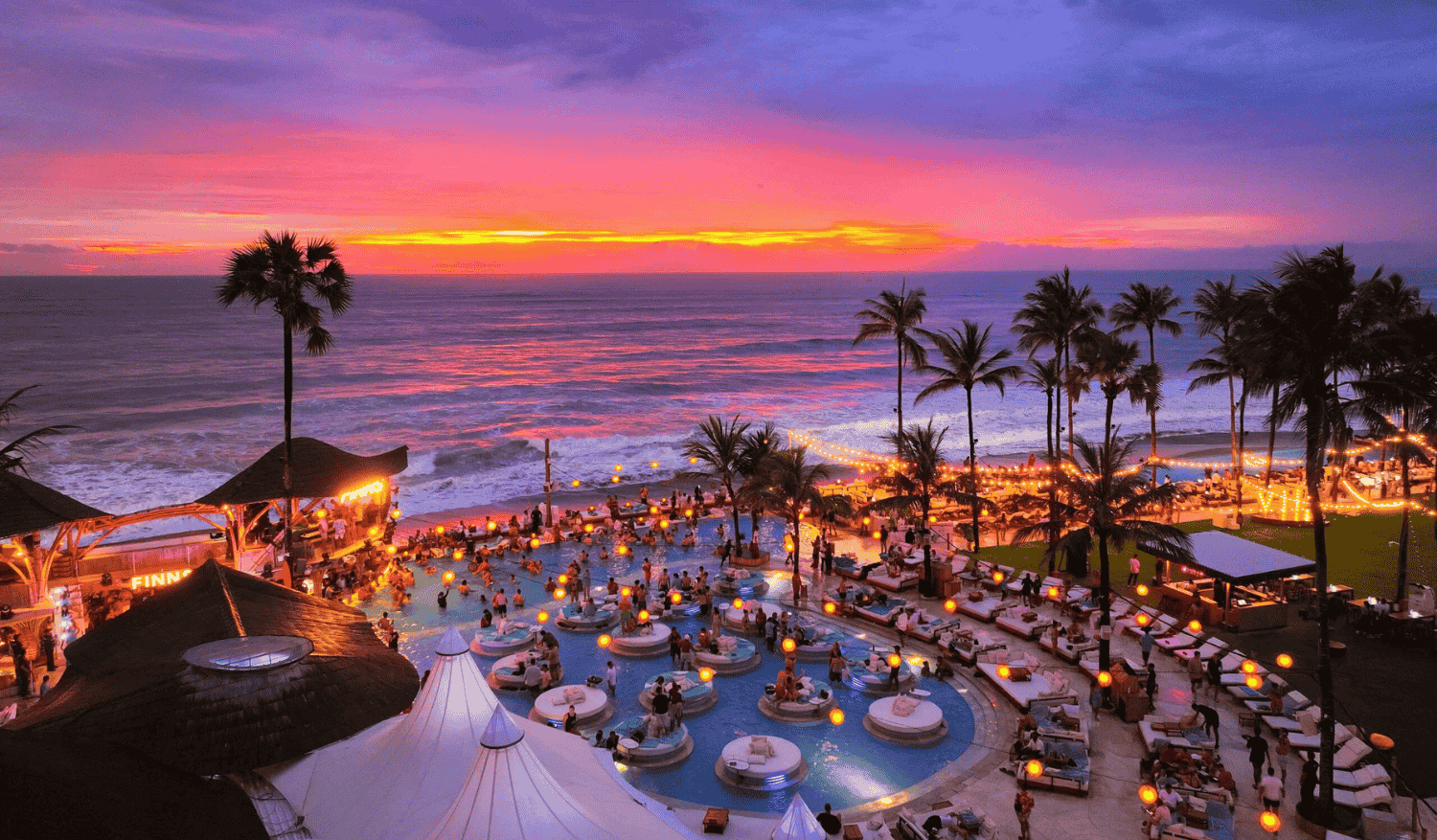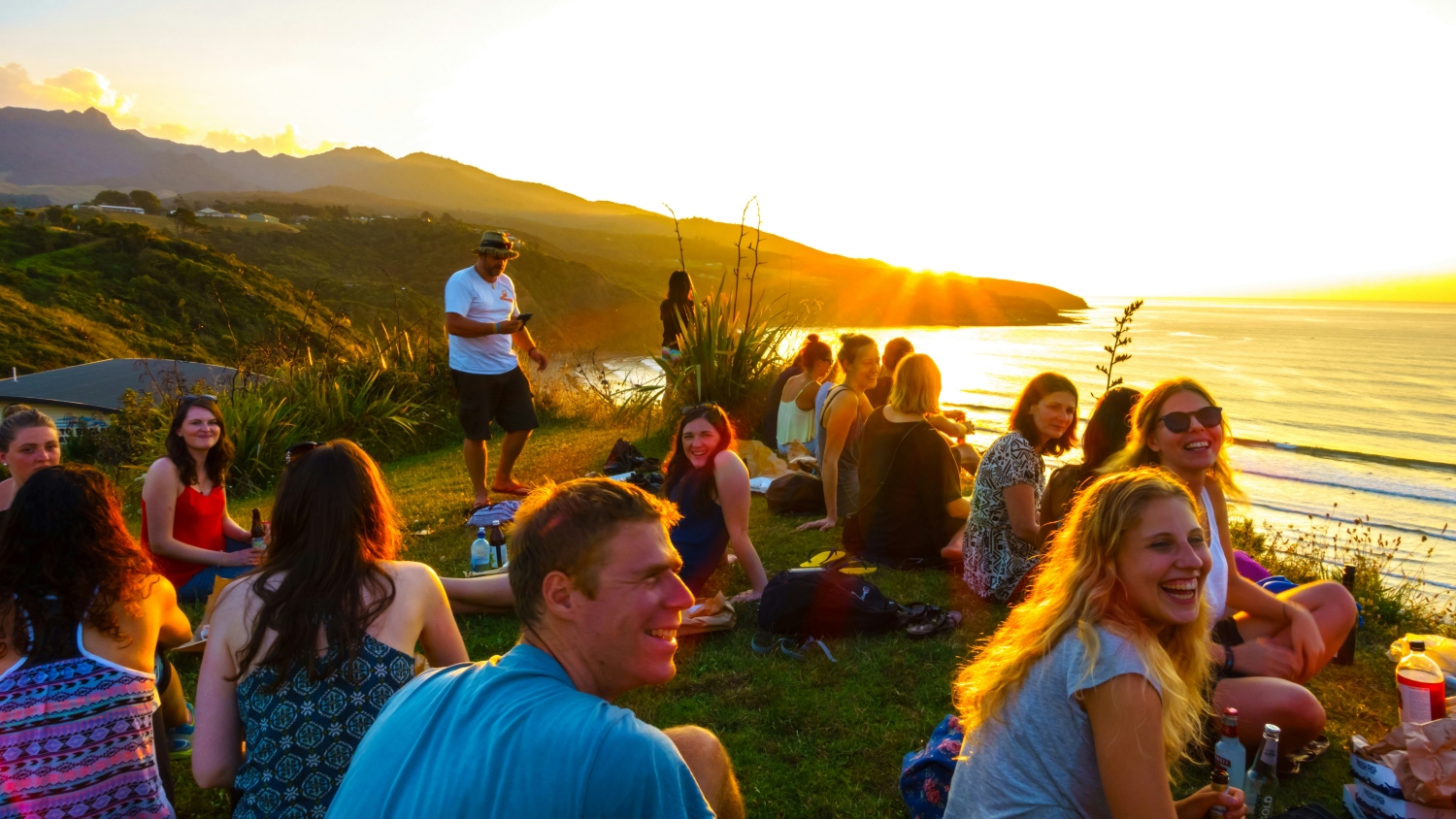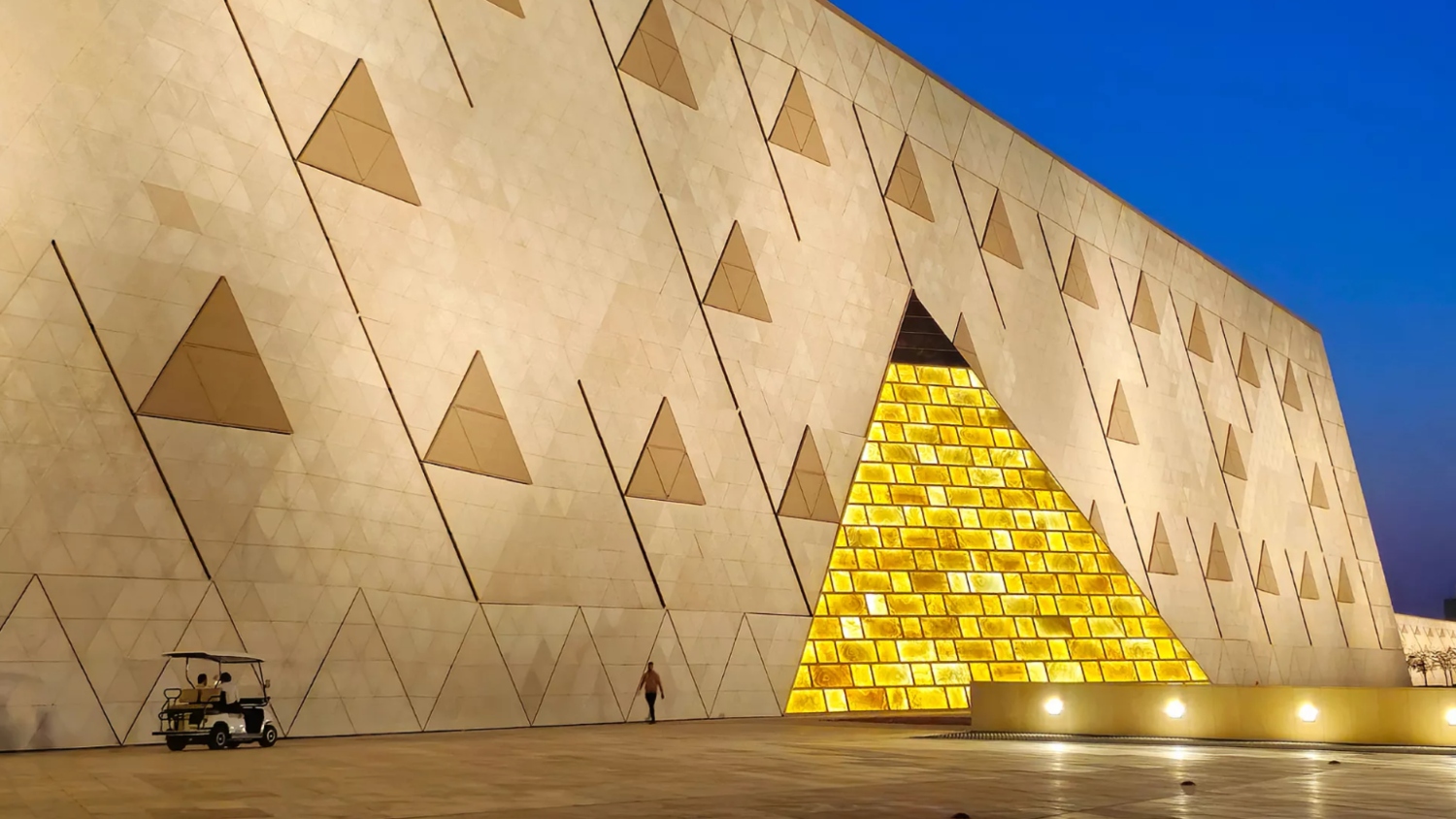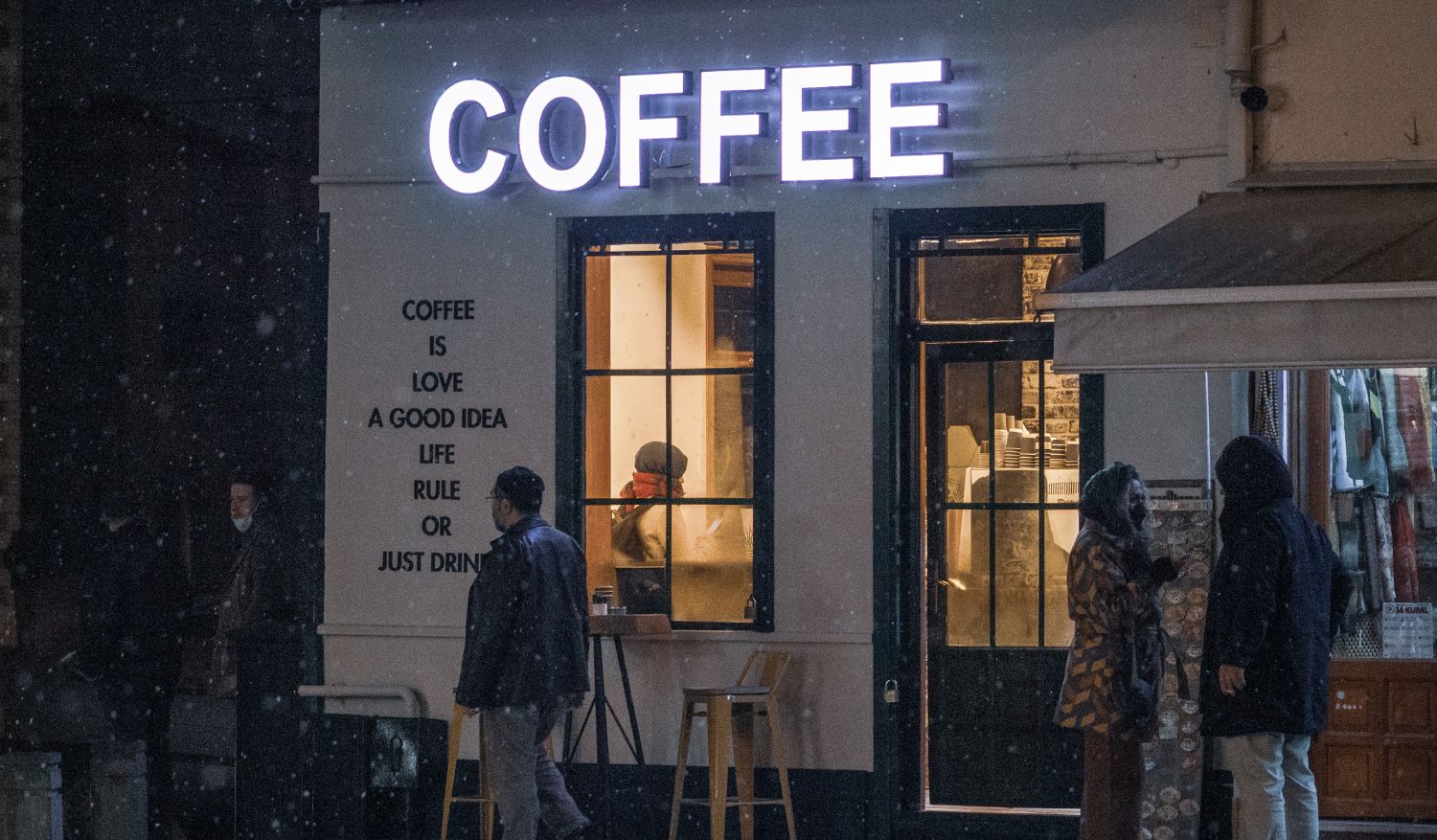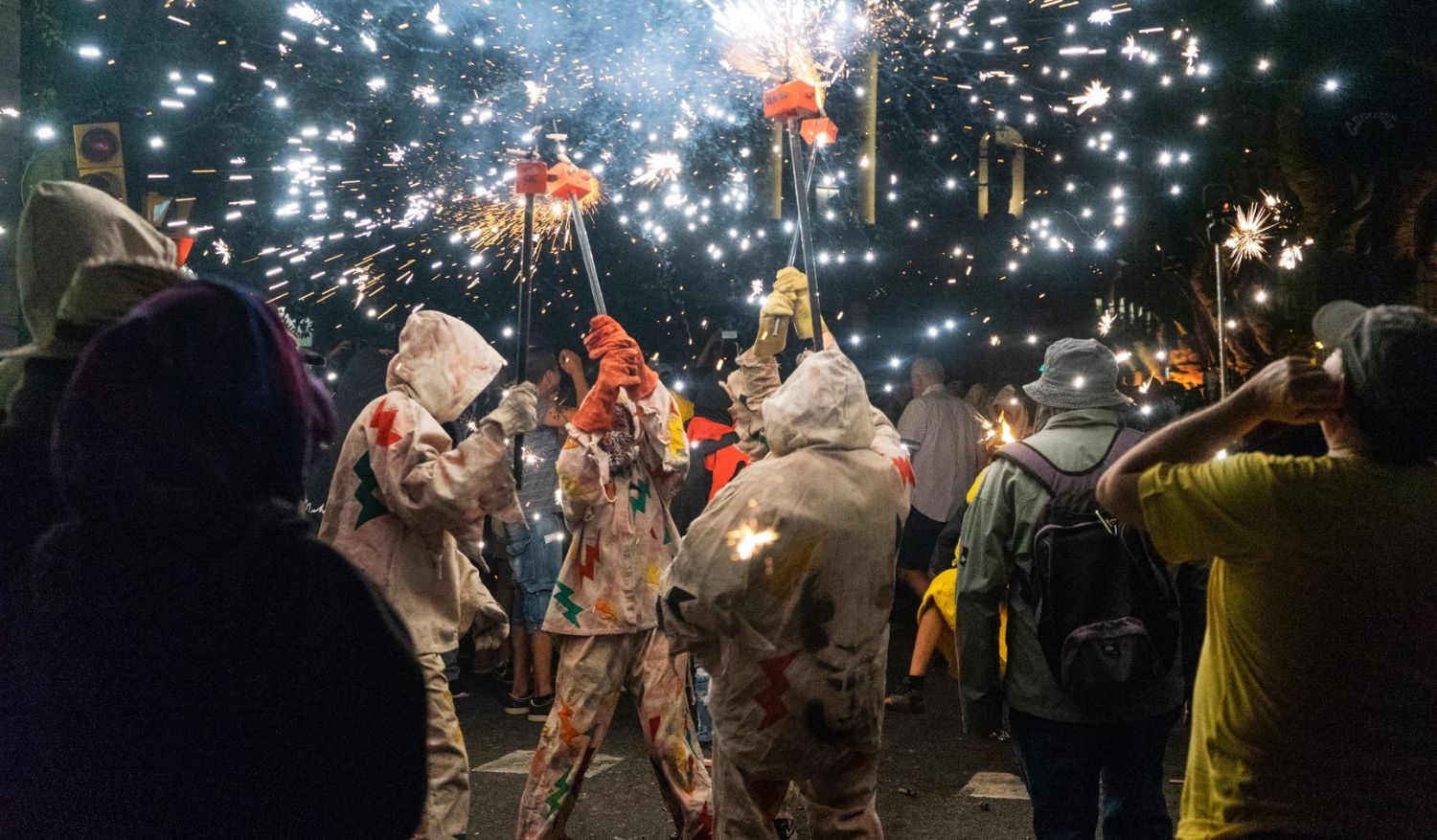From spiritual sanctuaries to sunset soirees, Bali’s identity has expanded beyond yoga mats and jungle retreats to become a global capital of beachside indulgence – the global epicentre of beach clubs. From Canggu’s boho enclaves to Uluwatu’s cliffside luxury, the island now pulses to the rhythm of ambient house beats, barefoot champagne toasts, and curated sunset parties. But how did Bali trade incense and offerings for bottle service and Balearic vibes?
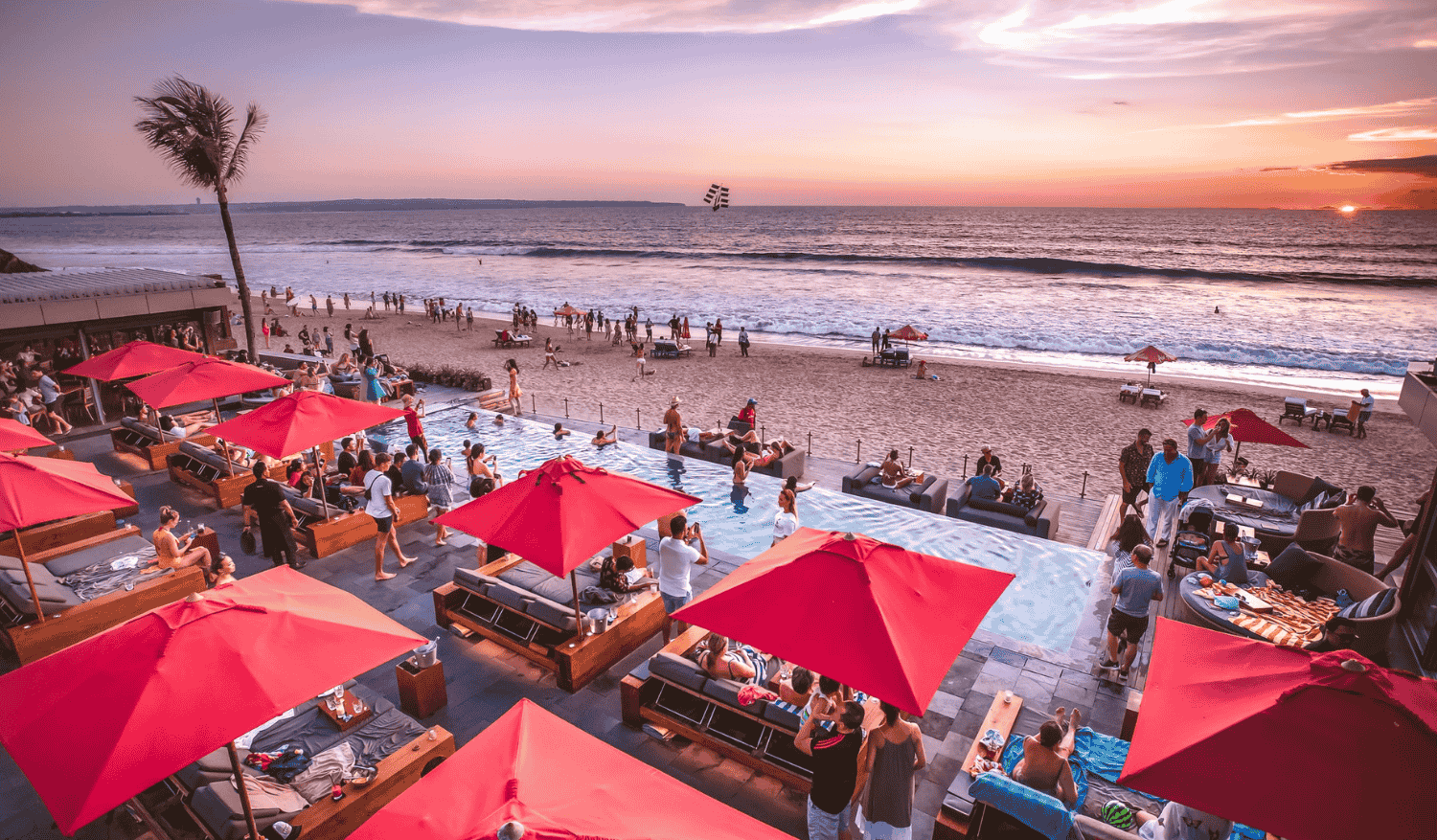
From Bintang to Brunch Clubs
It started in the late 1990s, when Kuta catered to surfers and backpackers looking for cheap thrills and cold beers. But everything changed with the opening of Ku De Ta in 2000. This sleek, design-forward venue in Seminyak introduced Bali to a new lifestyle concept – part beach bar, part fine dining, and wholly elevated. It wasn’t just about the view; it was about the experience.
Ku De Ta set the tone for the island’s transformation from rustic paradise to refined playground. Tourists began to seek more than surf breaks – they wanted all-day lounging, designer drinks, and curated music.
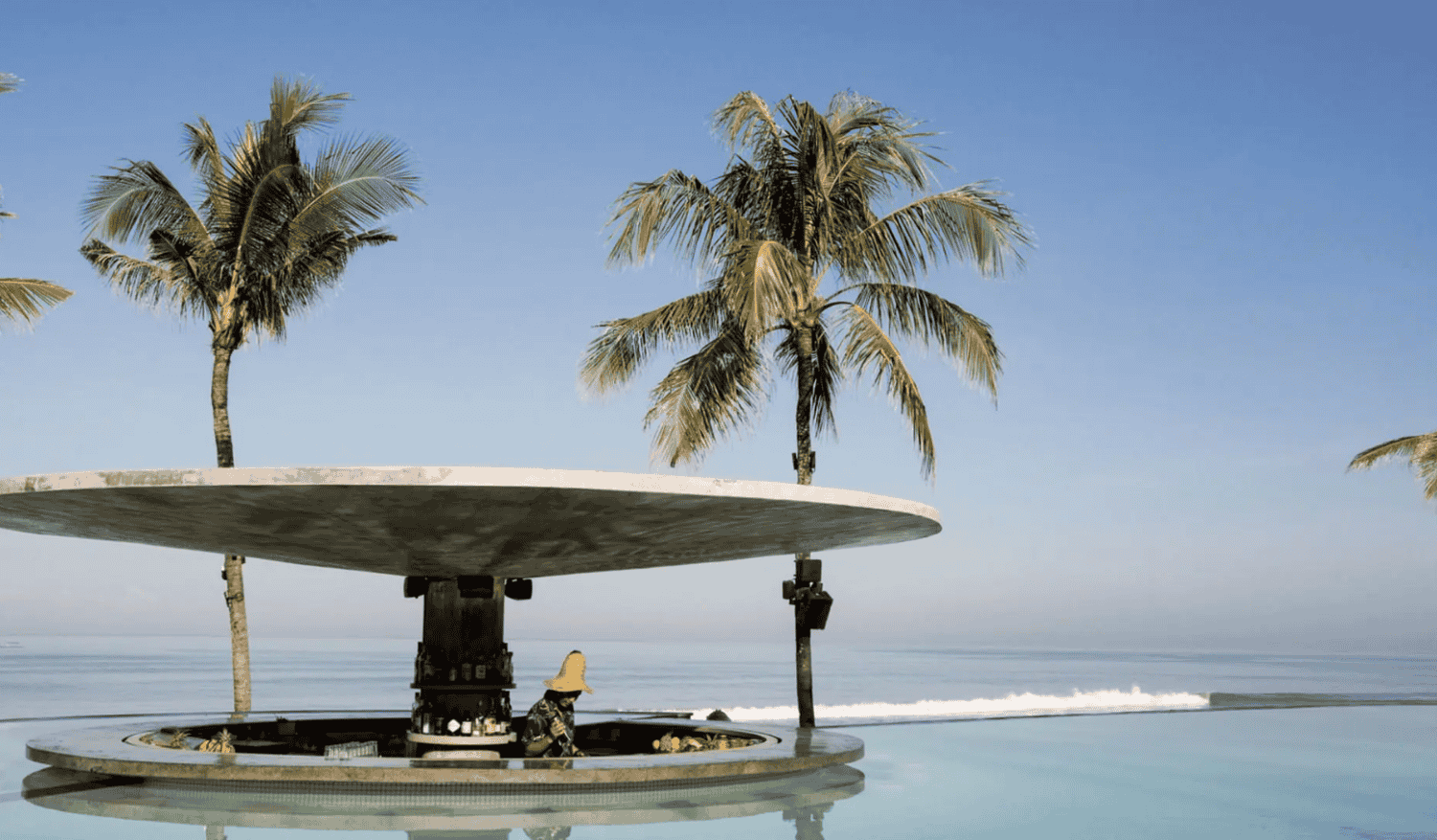
All Day, All-In Experiences
By the 2010s, Bali’s beach clubs had evolved into full-blown lifestyle destinations. Potato Head and Finns led the charge, offering everything from swim-up bars and spa treatments to family zones and themed brunches. These weren’t just places to dip your toes in the sand – they were built for staying all day, all night, and maybe even forgetting which day it was.
Infinity pools, international DJs, vegan menus, and curated aesthetics became the new normal. Beach clubs became the heartbeat of Bali’s tourism economy – effortlessly blending leisure with luxury.
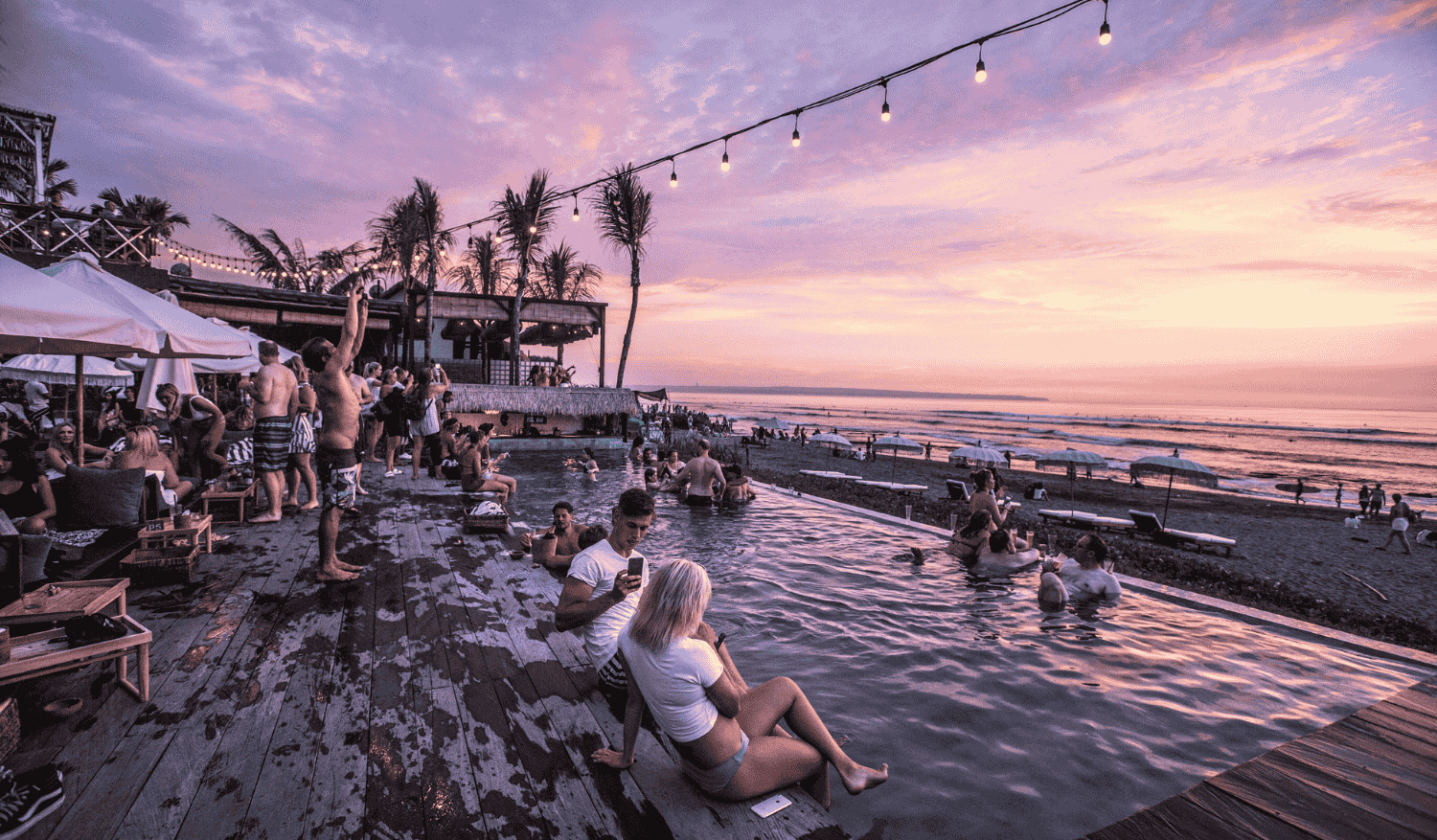
Instagram Made It Inevitable
Just as Bali’s beach club scene began heating up, Instagram was taking off – and the timing couldn’t have been better. The island’s natural beauty, combined with the photogenic flair of its beach clubs, made it irresistible. Think driftwood décor, pastel cocktails, golden-hour lighting and infinity pools merging with the sea.
Beach clubs leaned into this visual culture, becoming as much content studios as hospitality venues. Every cabana, cushion and cocktail was designed with the grid in mind.
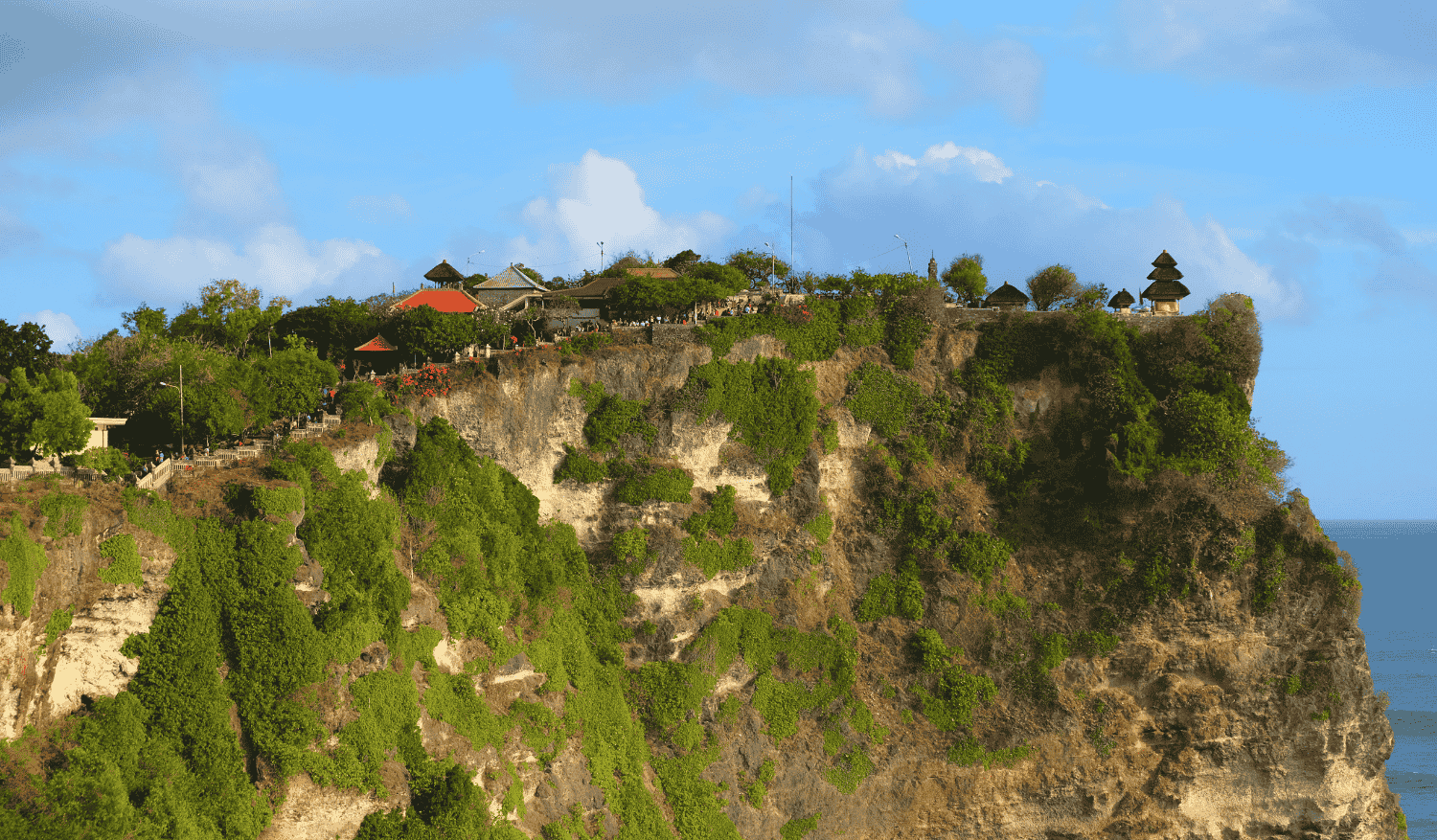
Yet Bali’s transformation into a beach club mecca isn’t without its contradictions. Traditional communities once defined by ceremony and quietude now find themselves neighbours to bass-heavy parties and weekend brunch crowds. Areas like Uluwatu, once known for temple visits and surf sanctuaries, now host ultra-luxury venues that bring the energy of global nightlife capitals to the cliffs.
Still, a number of venues try to tread more lightly. Sustainability, local materials, and community partnerships have emerged as part of the next evolution in Bali’s beach club scene, aiming to strike a balance between escapism and environmental responsibility.

The Blueprint That Went Global
Bali’s beach club phenomenon has become the blueprint for other coastal destinations across Southeast Asia and beyond. Developers from Thailand to the Maldives have tried to replicate the formula – but few have captured the same magic. The island’s blend of natural beauty, laid back charm, hospitality, and creative energy is hard to bottle.
Beach clubs are no longer just a tourist trend – they’re part of the island’s identity. Whether you’re sipping a mocktail in Canggu, swimming in a cliffside pool in Uluwatu, or dancing barefoot beneath palm trees, you’re taking part in the Balinese redefinition of the modern beach lifestyle.
Because in Bali, the beach isn’t just where the day ends – it’s where the experience begins.
Find more beaches to discover here.


